3.07.2018
SpaceX Turns Focus to Vandenberg for Twilight Launch with Iridium-7 NET July 20
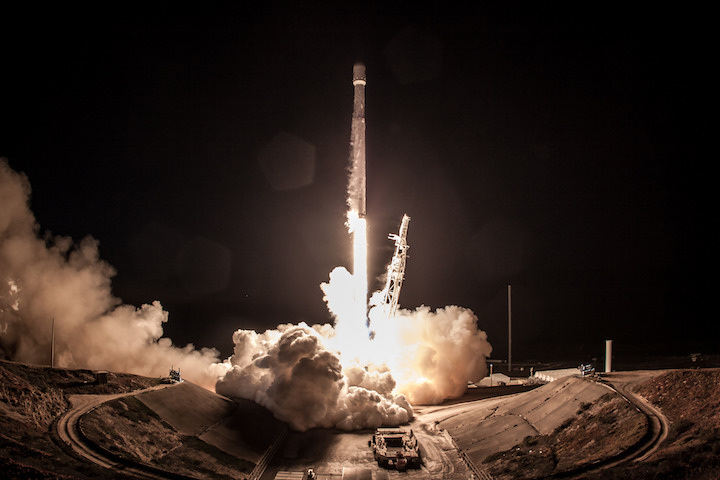
Up next on the U.S. space launch manifest is another SpaceX mission, and another twilight one at that, scheduled to fly atop a ‘Block 5’ Falcon 9 rocket from Vandenberg Air Force Base in southern California as soon as July 20 with the seventh batch of Iridium NEXT satellites. Liftoff of Iridium-7 is currently scheduled for 5:12 a.m. PDT (12:12 UTC) from Space Launch Complex 4E, about 10 minutes after the first light of dawn appears on the eastern horizon.
The said, although sunrise will occur an hour after liftoff, the launch could put on another visually stunning show for the western United States, as long as Vandenberg’s notorious fog stays away. Falcon 9 will launch in darkness, but ascend into sunlight as it roars through the upper atmosphere on the power of its nine Merlin engines to deploy Iridium NEXT satellites 56-65.
Matt Desch, Iridium’s CEO, recently tweeted about it using the hashtag #LetsScareLAAgain. And they probably will, just like when Iridium-4 launched last December, which saw the setting sun to the west illuminate the rocket’s expelled gas to create a dazzling sight in the twilight. Many in LA thought aliens were invading, while others thought it was WWIII, while others believed it to be a government conspiracy. People were calling 911, the Los Angeles Fire Dept had to post a media advisory, and even the Los Angeles mayor had to take to Twitter to calm people down.
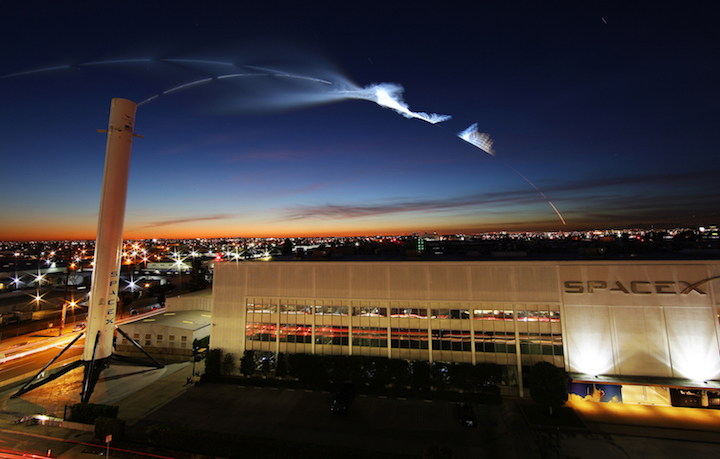
The launch of Iridium-4 on a SpaceX Falcon 9 rocket on December 22, 2017, from Vandenberg AFB, CA, caused a lot of clueless people to freak out as the booster was an amazing sight in sunset’s fading twilight. Photo: SpaceX
-
Iridium-7 will mark the 7th of 8 planned launches to deploy Iridium’s full NEXT constellation, a $3 billion next-generation, mobile, global satellite network. It’s replacing the company’s aging first generation global constellation, whose earliest members were launched two decades ago, and represents one of the largest technology upgrades ever completed in space.
“It represents the evolution of critical communications infrastructure that governments and organizations worldwide rely on to drive business, enable connectivity, empower disaster relief efforts and more,” says Iridium.
Currently, all 10 of the satellites for launch #7 are at Vandenberg undergoing final preparations for flight. “Mating to the dispenser is well along – to be completed this weekend,” said Desch in a tweet June 28. “Everything else needed is there as well and being processed – schedule looking good!”
According to Iridium, “all 10 satellites will be deployed to Iridium orbital plane number 5, where they will go into operation immediately following a thorough testing and validation process. The Iridium network is comprised of six polar orbiting planes, each containing 11 operational crosslinked satellites, for a total of 66 satellites in the active constellation. In total, 81 Iridium NEXT satellites are being built, with 66 in the operational constellation, nine serving as on-orbit spares and six serving as ground spares.”
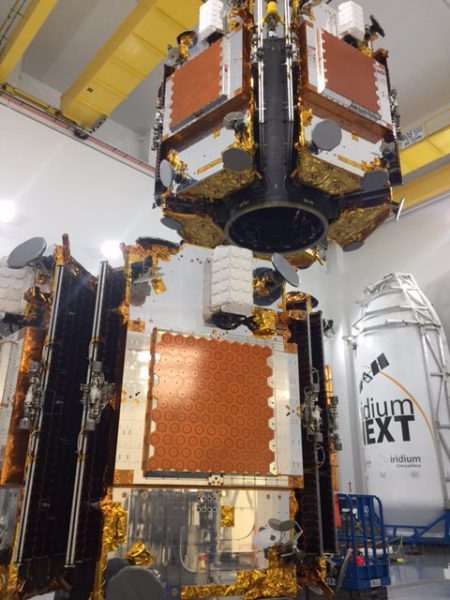
Previous Iridium NEXT satellites being encapsulated into a Falcon 9 payload fairing. Photo Credit: SpaceX/Iridium
-
Over the course of the last year, Iridium NEXT has become a regular feature of the SpaceX launch campaign. Contracts between the McLean, Va.-based telecommunications firm and SpaceX were inked back in June 2010 and, at the time, represented the largest single launch deal ever signed, worth an estimated $492 million. Iridium NEXT is overseen by prime contractor Thales Alenia Space, with its subcontractor Orbital ATK (now Northrop Grumman Innovation Systems) selected to build the operational satellites, together with on-orbit and ground-based spares.
Weighing around 1,760 pounds (800 kg), each satellite is powered by twin solar arrays and operates at a mean altitude of 485 miles (780 km), inclined 86.4 degrees to the equator, having the capability of a decade-long lifespan. Their solar arrays, when fully unfurled, span 31 feet (9.4 meters) and generate two kilowatts of electricity, a 50-percent uplift over the power-producing potential of earlier Iridiums.
As for SpaceX and their rocket, the Falcon 9 will attempt an offshore landing on their autonomous drone ship ‘Just Read The Instructions,’ and although not confirmed yet, it’s expected that SpaceX will make another attempt at a payload fairing recovery with their ‘Catcher’s Mitt’ boat named Mr Steven, something they have attempted a few times prior with limited success. The idea being the fairings parachute down where a waiting Mr Steven catches them in a giant net.
Iridium-7 will mark the second launch of a ‘Block 5’, confirmed by Desch to be shiny new core 1048. All Falcon 9 launches moving forward will be on Block 5s, SpaceX’s final major evolution of the Falcon 9 rocket, upgraded and redesigned for improved performance, more power and the ability to fly 10 or more times per booster before needing refurbishment.
Quelle: AS
---
Update: 24.07.2018
.
SpaceX to Launch Second Mission in 3 Days with 'Iridium-7' from Vandenberg July 25
Fresh off launching Telstar 19 VANTAGE from Florida, SpaceX is set to launch another mission this week, their second in 3 days and 14th of the year, from Vandenberg Air Force Base in Southern California with the seventh batch of Iridium NEXT satellites. Liftoff of Iridium-7 is currently targeting Wednesday, July 25, precisely on an instantaneous launch window of 4:39:26 am PDT (11:39:26 UTC) from Space Launch Complex 4E.
SpaceX conducted a successful static test fire of the rocket for Iridium-7 on July 21, a standard practice for the company where they fuel the booster and go through a “practice countdown” to uncover any issues and validate that the rocket, systems, launch team and ground support equipment are all ready to go, finalizing with a short ignition of the rocket’s engines.
Iridium-7 will mark the 7th of 8 planned launches to deploy Iridium’s full NEXT constellation, a $3 billion next-generation, mobile, global satellite network. It’s replacing the company’s aging first generation global constellation, whose earliest members were launched two decades ago, and represents one of the largest technology upgrades ever completed in space.
“It represents the evolution of critical communications infrastructure that governments and organizations worldwide rely on to drive business, enable connectivity, empower disaster relief efforts and more,” says Iridium.
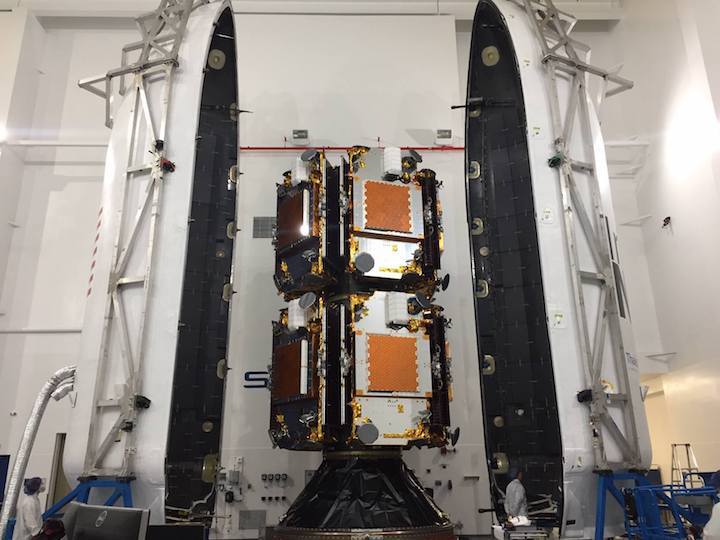
Iridium NEXT satellites stacked and encapsulated in the Falcon 9 fairing for from Vandenberg AFB, CA. Photo Credit: Iridium
.
According to Iridium, “all 10 satellites will be deployed to Iridium orbital plane number 5, where they will go into operation immediately following a thorough testing and validation process. The Iridium network is comprised of six polar orbiting planes, each containing 11 operational crosslinked satellites, for a total of 66 satellites in the active constellation. In total, 81 Iridium NEXT satellites are being built, with 66 in the operational constellation, nine serving as on-orbit spares and six serving as ground spares.”
Over the course of the last year, Iridium NEXT has become a regular feature of the SpaceX launch campaign. Contracts between the McLean, Va.-based telecommunications firm and SpaceX were inked back in June 2010 and, at the time, represented the largest single launch deal ever signed, worth an estimated $492 million. Iridium NEXT is overseen by prime contractor Thales Alenia Space, with its subcontractor Orbital ATK (now Northrop Grumman Innovation Systems) selected to build the operational satellites, together with on-orbit and ground-based spares.
Weighing around 1,760 pounds (800 kg), each satellite is powered by twin solar arrays and operates at a mean altitude of 485 miles (780 km), inclined 86.4 degrees to the equator, having the capability of a decade-long lifespan. Their solar arrays, when fully unfurled, span 31 feet (9.4 meters) and generate two kilowatts of electricity, a 50-percent uplift over the power-producing potential of earlier Iridiums.
As for SpaceX and their rocket, the Falcon 9 will attempt an offshore landing on their autonomous drone ship ‘Just Read The Instructions,’ and SpaceX will make another attempt at a payload fairing recovery with their ‘Catcher’s Mitt’ boat named Mr Steven too, something they have attempted a few times prior with limited success. The idea being the fairings parachute down where a waiting Mr Steven catches them in a giant net.
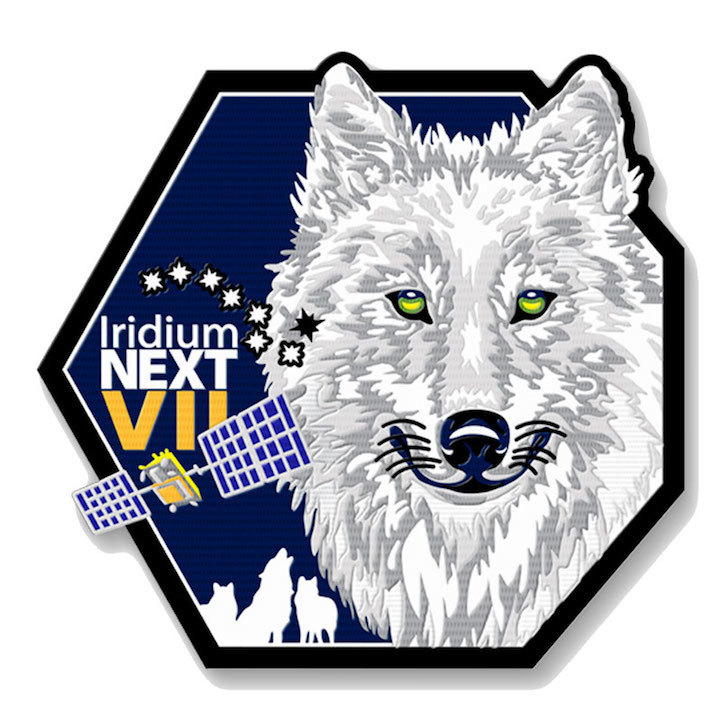
Iridium-7 will mark the third launch of a ‘Block 5’ rocket as well, SpaceX’s final major evolution of the Falcon 9 booster, upgraded and redesigned for improved performance, more power and the ability to fly 10 or more times per booster before needing refurbishment. All Falcon 9 launches moving forward will be ‘Block 5’ rockets.
And while NASA will eventually certify ‘Block 5’ to launch astronauts on soon, neither the Iridium-7 rocket or the previous two ‘Block 5’ rockets which launched Bangabandhu-1 or Telstar 19 VANTAGE count towards that certification, because SpaceX has yet to implement a critical new design for the rocket’s second stage cryogenic helium pressurant tanks.
One of three composite overwrapped pressure vessels (COPVs) inside the second stage liquid oxygen (LOX) tank failed back in 2016, which led to an on-pad explosion of a Falcon 9 rocket back in 2016. COPVs are used to store cold helium which is used to maintain tank pressure.
The first launch with the redesigned helium tanks won’t fly until Crew Dragon Demo-1 later this year from Florida. Only then will NASA begin counting launches of ‘Block 5’ towards the 7-flights needed for crew certification.
Quelle: AS
---
Update: 25.07.2018
.
Start von SpaceX Falcon9 mit Iridium-7 NET Satelliten
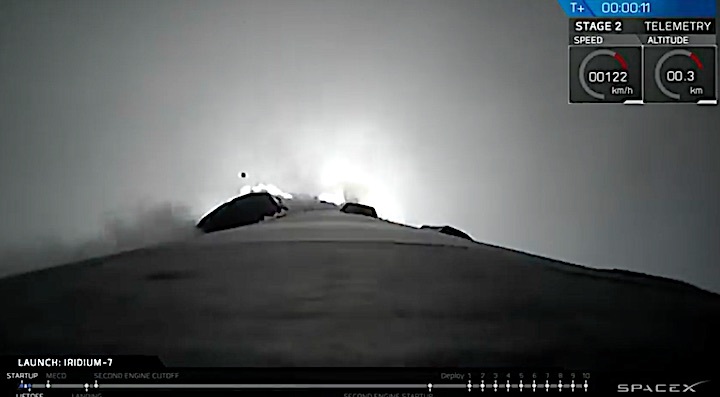
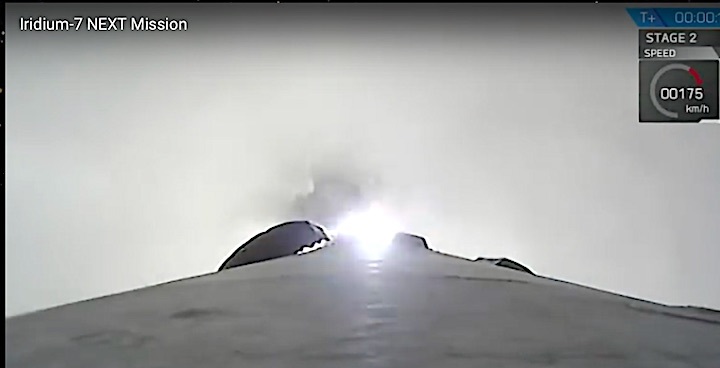
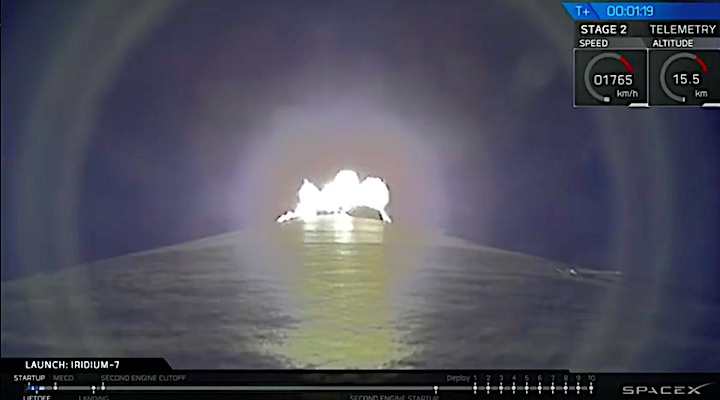
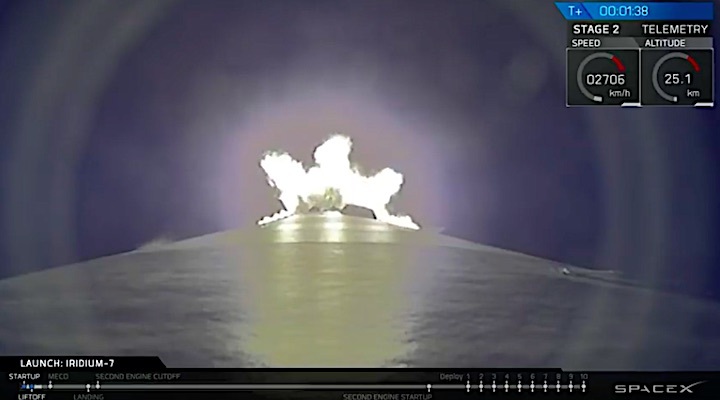
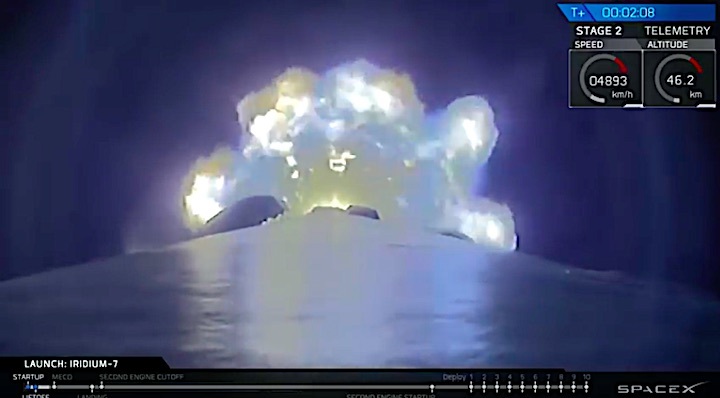
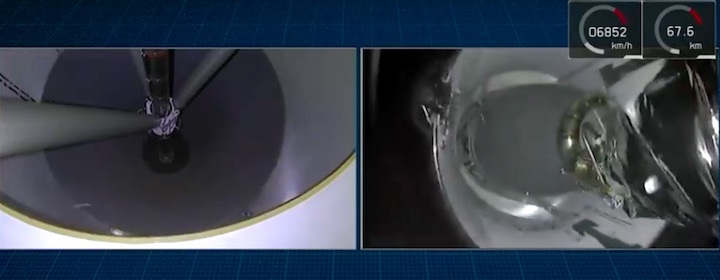
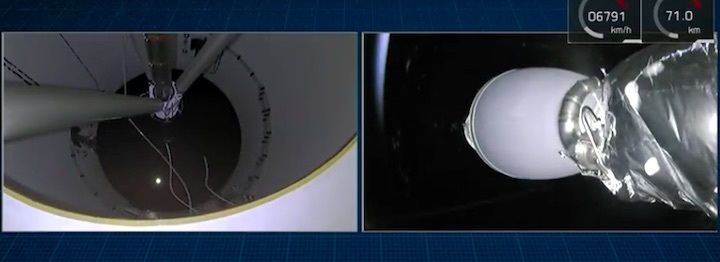
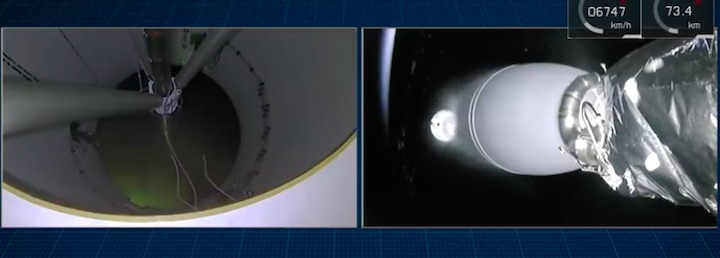
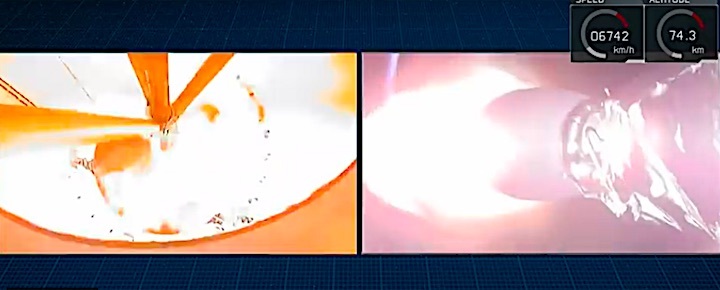
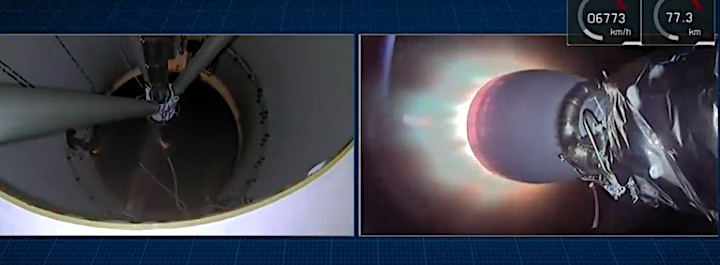
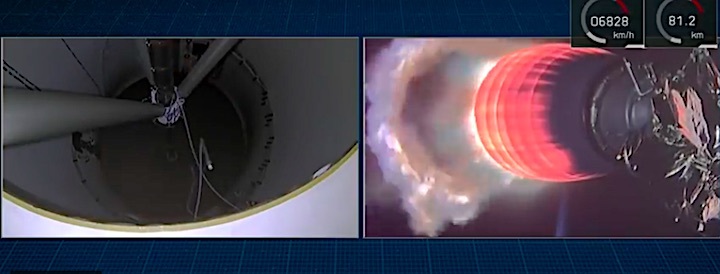




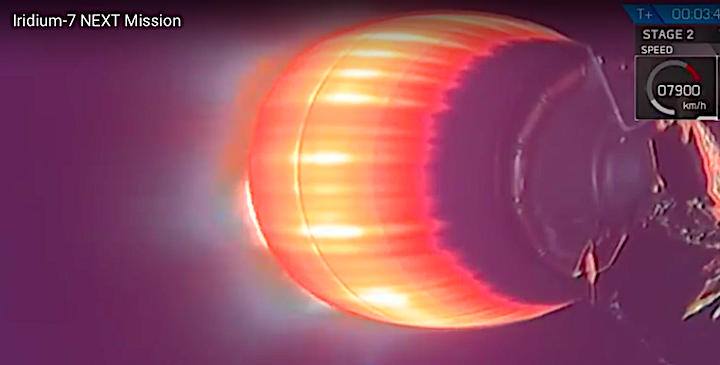
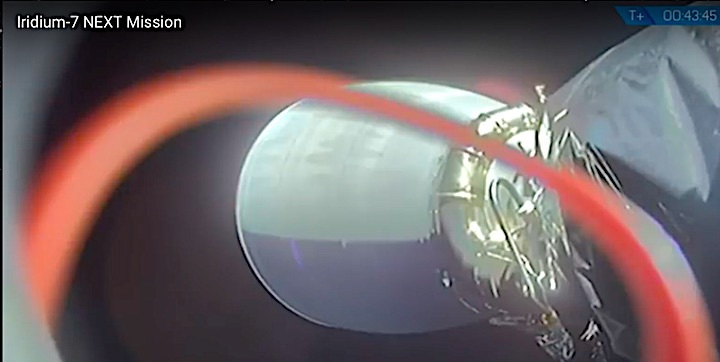
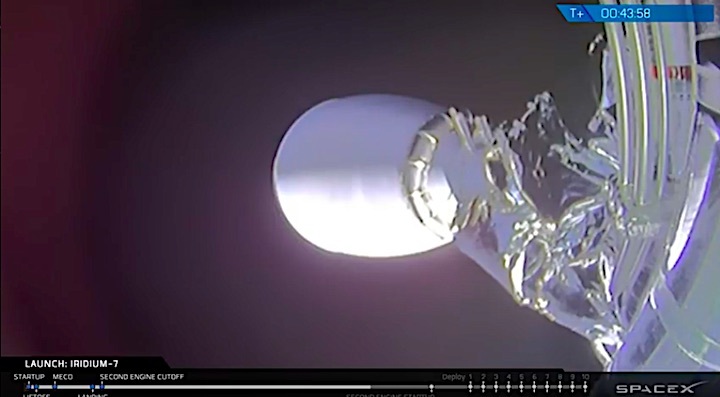
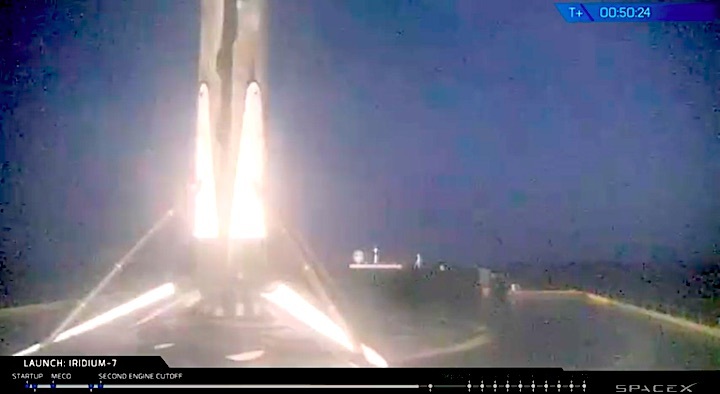
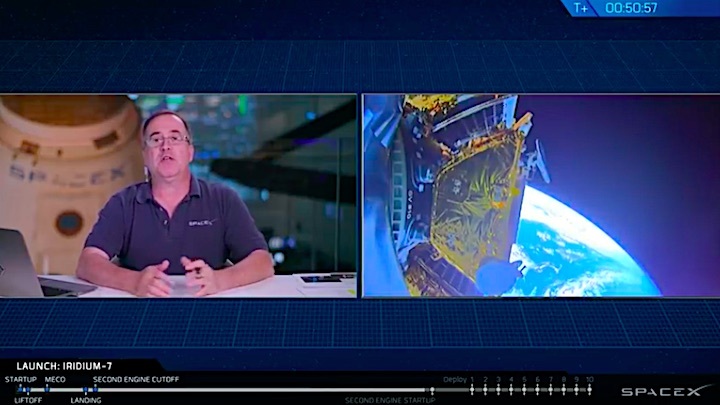
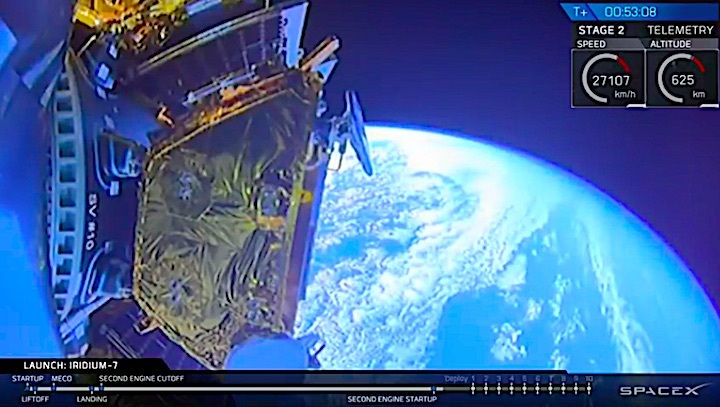
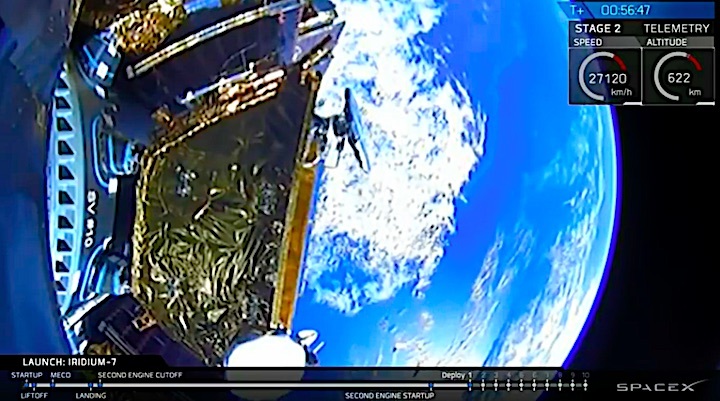
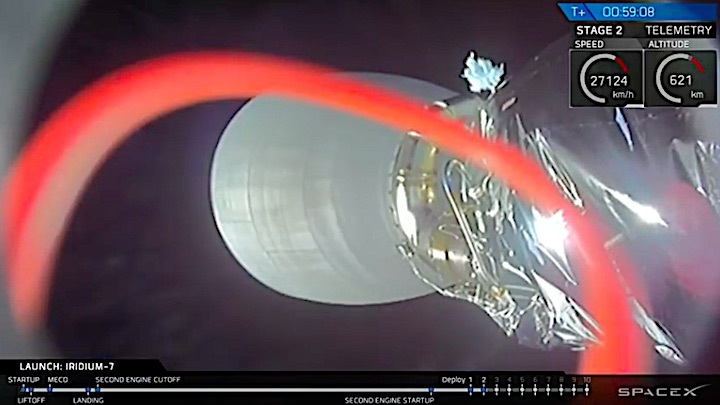
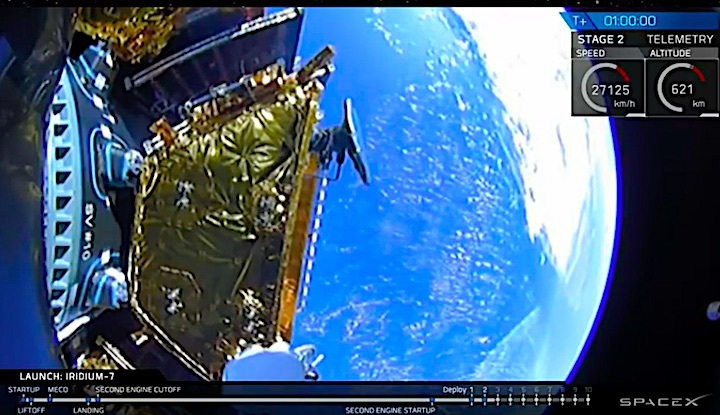
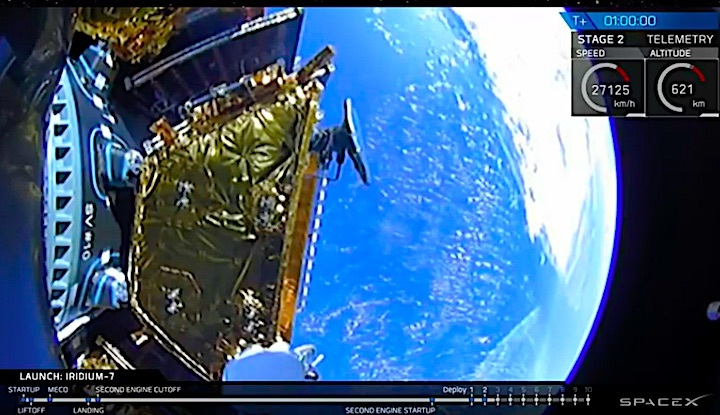
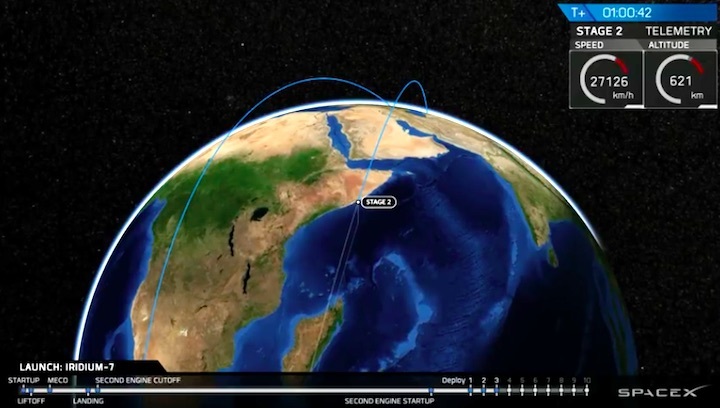
Quelle: SpaceX
+++
SpaceX Falcon 9 rocket takes off from Vandenberg
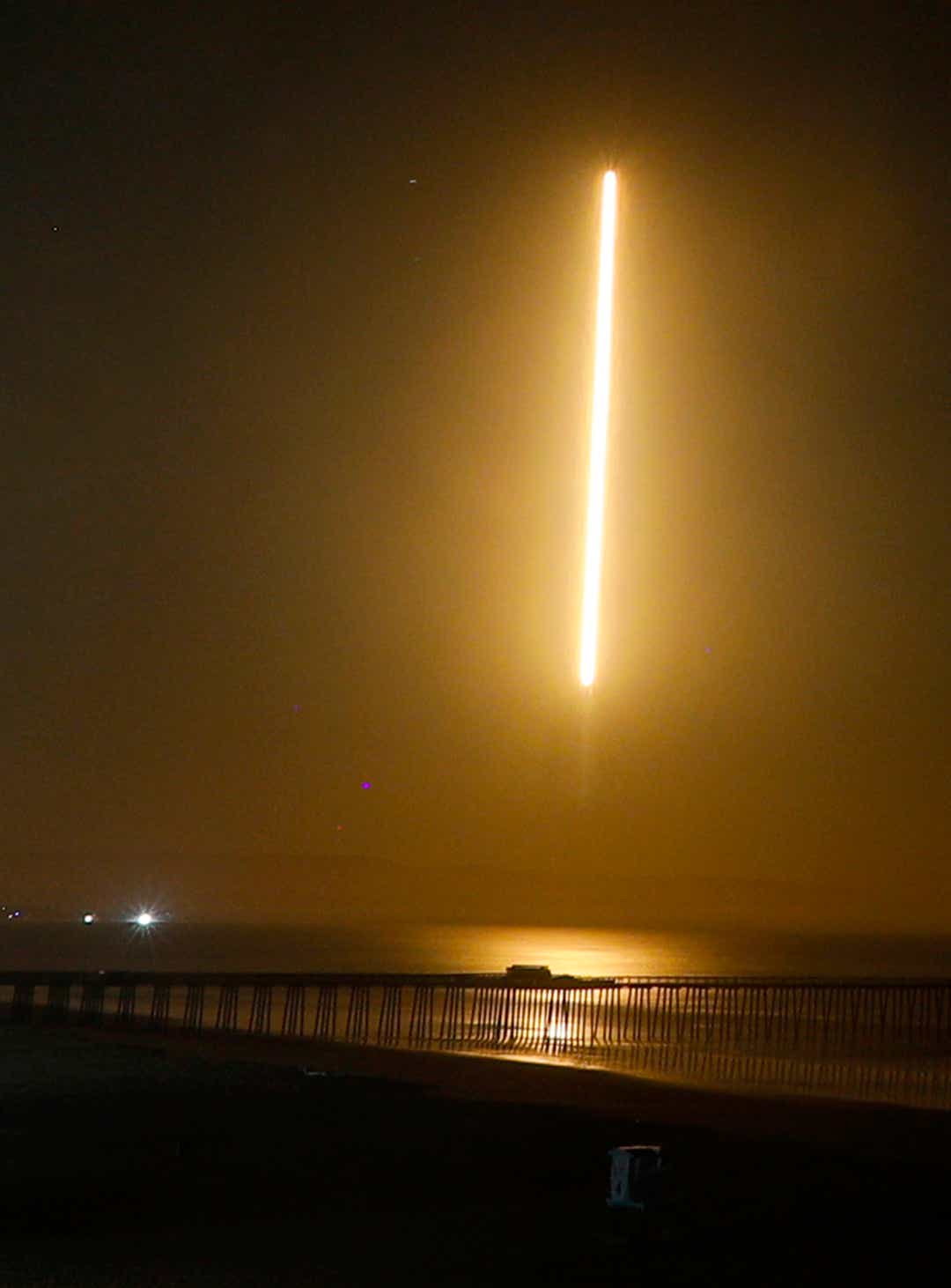
Early rising space fans were treated to a rocket launch from Vandenberg Air Force Base on Wednesday.
The SpaceX rocket carried a set of satellites for Iridium Communications Inc. when it took off at 4:39 a.m. from the base in Santa Barbara County.
The final frontier:
The launch was part of an effort by Iridium to update its satellite network that provides voice and data coverage to satellite phones, pagers and other communication devices around the world.
It was the seventh launch in Iridium's $3 billion campaign to replace its entire fleet of globe-circling satellites and brought the number in orbit to 65. One more launch will increase the number to 75, including 66 operational satellites and nine spares.
The Wednesday launch was rescheduled from another date because SpaceX needed more time to prepare the rocket for launch, according to Iridium.
The rocket carrying with 10 Iridium NEXT satellites took off from Space Launch Complex 4E, originally an Atlas launch pad activated in 1962 and modified and reconstructed by SpaceX beginning in July 2011.
Deployment of the satellites began about an hour after launch, according to SpaceX.
SpaceX says that despite challenging weather and sea conditions, the Falcon’s first stage successfully returned to Earth and landed on a drone ship stationed in the Pacific Ocean south of Vandenberg. The landing on the drone ship, named “Just Read the Instructions,” occurred about 10 minutes after launch.
Quelle: VC Star
